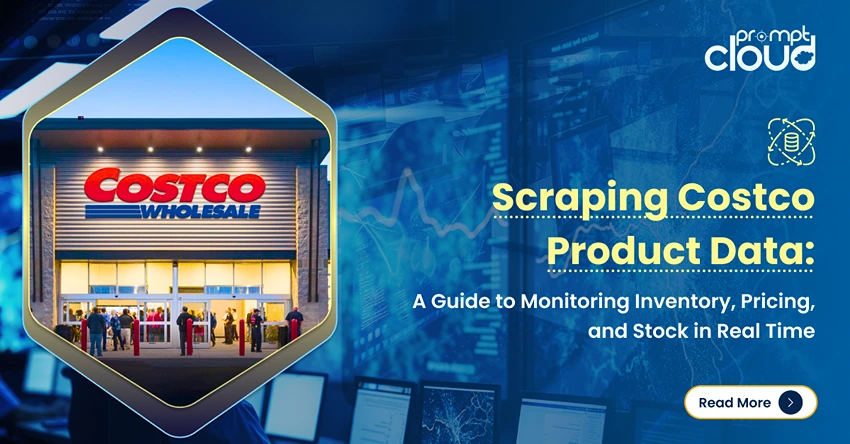Data warehousing is as important as analytics. If you wish to leverage crucial data sets to accelerate growth within the enterprise, it will be imperative to create effective data warehouses. Chunks of data available in different formats from different sources might not always be useful.
Process developers, business owners, and marketers may not use large amounts of data together. Data segmentation, classification, and warehousing emerge as the prime requisite in such contexts. It is crucial to identify the operational points where successful and targeted data analysis seems to be important!
Introduction to ETL/ELT
ELT happens to be a term that finds application in today’s dynamic data environment. If you want effective data analysis to be a significant part of your business strategies, storing and shifting data will be a crucial requisite. Data isn’t the same always and needs to be updated with time. You just can’t rely on previously stored data as that leaves room for discrepancies. Your valuable information will get affected thus making the data irrelevant and outdated. That can be detrimental to your venture, as you will take wrong and ineffective decisions.
It’s here that a concept emerges as the perfect solution to data warehousing issues. It has been doing the rounds for quite some time now and can be utilized for storing, leveraging, and reusing chunks of data. Here’s a quick glimpse of ELT!
Understanding the concept
If we go by conventional definitions, ELT refers to the process of shifting data sets from sources to storage centers. In a nutshell, data is sent to huge data centers and stored there for reuse. Breeze through the crucial processes involved in it:
1. Data extraction: Data sets are copied from sources and then shifted to a staging area.
2. Data transformation: Large chunks of data are reformatted for the warehouses. Business targets, profit goals, and other factors are taken into consideration.
3. Data Loading: Copying the data from staging area to the storage site or warehouse.
Understanding and comprehending the intricacies of this process is crucial. That will help us develop profound ideas of what ELT actually does.
Breaking down the process (Sneak-peek into associative tools)
The process involves quite a few technicalities. Every data center is different, which creates the need for diverse warehouses and storage units. Data storage takes place in a single set of ‘staging tables.’ Querying, mining, and data sourcing are integral parts of the process, and they play pivotal roles in data warehousing.
ETL isn’t a ‘one man show.’ It requires associative tools that can accelerate the speed and performance of this process. Some of these tools include:
- Informatica
- DataStage Services
- SQL Server Integration
- SSIS or Server Integration Services
What binds these tools together are their basic functionalities. These tools enable data identification from a particular source, ensure changes to the existing structure, and then write the code to a specific target. In simple words, data extraction, loading, and transformation can take place at various stages and multiple points. When it comes to creating a strong and reliable storage center for enterprise data, it becomes imperative to seek assistance of highly skilled data scientists. They have years of experience and technical expertise in data warehousing, which can save your enterprise considerable amount of time and cost.
1. Caring for your data
Irrespective of their fields, sector, or modes of operation, every enterprise relies on their data to stay ahead of the growth curve. Most importantly, data mining and targeted analytics help them gain crystal clear insights into market trends. However, it’s imperative to save, store, and protect data. Collecting huge data amounts isn’t always the right thing to do. Data can lose relevance, utility, and importance if not stored in the right way. That’s where enterprise owners feel and realize the significance of caring for their data sets. ELT and ETL are two unique approaches in the data space which will stop this from happening. When it comes to building rich data centers and warehouses, these approaches work wonders.
2. Defining ELT
ELT is a tad different from the other approach. What we can say is that it’s a unique approach for data warehousing. The data isn’t transformed before getting created. Rather, ELT makes the most of the ‘target system’ to perform data transformations. Application and adoption of both these approaches depend on the current scenario to a great extent. If the target system happens to be a high-end data engine, such as Hadoop cluster, data appliance, or cloud installation, application of ELT will surely make sense.
3. Identifying the differences
Differences exist in the basic structure and approach. ETL talks about a ‘pipeline approach,’ where data sets flow from the source to the target point. A separate transformation engine takes care of the changes. It is this particular engine that handles the incorporation of change in the existing data set. What a majority of business owners face is a tussle between these two warehousing approaches. You just can’t give a general verdict on which is better than the other one. Every enterprise and business is different. Even if they share similar branding or business goals, operational modes and ways will be poles apart. Quite naturally, data development, creation, and storage requirements won’t match with others. Here are some important aspects to keep in mind:
- Targeted performances: The ETL approach can work well for certain organizations. It can improve operations drastically thus resulting in smooth operations.
- Training improves performance: Proper usage of the ETL approach is only possible with perfect training. However, when it boils down to assessing its benefits and profits, the development and training expenses should be taken into account.
That’s a quick look at ETL, its role as a data warehousing approach, and how it ensures effective data storage. On that note, it’s high time to understand the pipeline approach.
Unraveling the pipeline approach
Just as water flows seamlessly from one point in the pipeline to the other, the ETL process talks about the same thing. The functionality is somewhat similar to that of a pipeline. ETL tools have the power to expand and store huge amounts of data. But, there’s always a permissible limit, and once that gets crossed, the pipeline can ‘burst.’
Data sorting can create a lot of problems. While planning to sort data, analysts might need chunks of information. As a result, the ELT tools have to contain huge data volumes. If the data contained in these tools are already sorted, transformations and storage become easier than ever. You will find the right channels to store and work on them, as well as retain their relevance.
What makes it so important?
ETL approaches and tools play the key roles in data warehousing. There’s no denying their importance in the entire process. Let’s take a look at why numerous enterprise owners are adopting the approach across the globe.
1. Swift data storage
Since this particular tool is already writing and reading the data, it becomes easier to process and store it. Even if one needs to perform complex calculations, the entire process becomes quite seamless and smooth.
2. Effective warehousing
It is imperative to keep certain aspects in mind while performing warehousing. Make it a point to keep the pipeline open and traffic-free. Clogged pipelines can prevent the passage and free flow of water. The same thing is true for data. If you are operating with ELT tools, you can be sure that your pipeline isn’t jammed with unnecessary data. Business owners get perfect opportunities to leverage relevant data, which get stored in the respective data centers.
Creation of multiple channels: You also have the chance to branch out the pipelines. That will not only ensure fast data flow but also accelerate the speed of operations. With free flow of desired data sets, your enterprise will surely develop agility, dexterity, and flexibility. All you need to keep in mind while splitting data storage channels is the computation part. That shouldn’t get transformed, as that will change the entire setup!
Bottom line
Developing, conceptualizing, and designing an effective and highly functional ETL pipeline is a critical task. The expertise, ingenuity, and knowledge required for such projects are huge. However, reputed and experienced data scientists can take up the role of a leading analytics partner, thus designing ETL pipelines.
If you want to develop a smart and effective data center for your enterprise, it has to start with a strong data warehouse. That’s where ELT emerges as the perfect solution. It’s an outstanding, useful, and tactical approach used while loading data warehouses.
Since data analytics have become a necessity for organizations across the globe, enterprise owners need to be on their toes while creating data centers. Proper and targeted data storage is no longer a choice. Rather, it’s a unique strategy to retain authenticity and relevance of data. The concept happens to be a revolutionary force in the Big Data world. You have to keep your data integration and extraction strategies intact. When coupled with ELT, your organization will receive endless opportunities to emerge as the winner!



















